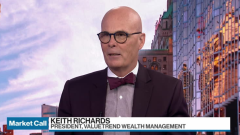Nov 7, 2023
US Consumer Borrowing Rises on Credit Cards, Non-Revolving Debt
, Bloomberg News
(Bloomberg) -- US consumer borrowing rose in September, reflecting modest growth in debt like credit cards and car loans.
Total credit increased $9.1 billion in the month, Federal Reserve data showed Tuesday. The figure, which isn’t adjusted for inflation, was in line with the median forecast in a Bloomberg survey of economists.
Revolving credit outstanding, which includes credit cards, rose $3.1 billion following a surge in the prior month. Non-revolving credit, such as loans for school tuition and vehicle purchases, grew $5.9 billion after falling sharply in August.
Unadjusted quarterly figures showed a nearly $28 billion slide in student loan debt outstanding in the third quarter. Much of that decline reflected the Department of Education starting to forgive $39 billion in student-loan debt for more than 800,000 borrowers. Additionally, interest began accruing again on federal student loans in September, driving a surge in payments.
Read More: Student Loan Borrowers Paid Off Billions Before Interest Restart
In an effort to tame inflation, Fed policymakers have rapidly increased interest rates, which has made it more expensive and difficult for Americans to borrow with credit cards and take out auto loans. More recently, a run-up in Treasury yields has driven borrowing costs even higher, translating to some of the highest mortgage rates in decades.
The report commercial interest rates on new cars, credit cards and personal loans all continued to climb in the third quarter.
A report earlier Tuesday showed US households increasingly tapped their credit cards in the July-to-September period, marking the eighth straight quarter of year-over-year increases, according to data from the New York Fed. Credit-card balances are now $154 billion higher than they were a year ago, the largest annual increase since the bank began tracking the data in 1999.
Consumer spending was exceptionally robust last quarter, in part because households dipped into their savings to fund the surge in outlays. Personal spending jumped by the most since 2021 in the July-to-September period — a pace economists doubt can be sustained into the final months of the year.
--With assistance from Kristy Scheuble.
©2023 Bloomberg L.P.






